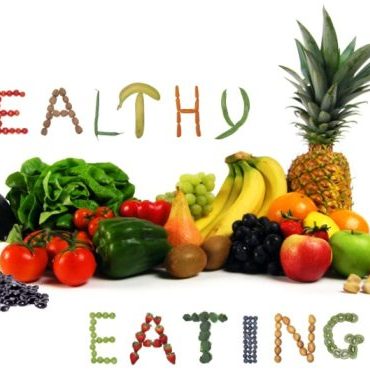 LOTL’s Resident Nutritionist helps with all your health-related queries!
LOTL’s Resident Nutritionist helps with all your health-related queries!
Can I have some guidelines on what 5 servings of veggies and 2 serves of fruit actually look like?
The best way to describe a serving of fruit and vegetables is: a serve is an amount that fits into the palm of your hand with your fingers curled around the food. This means that a child’s serve would be small, a woman’s serve would be larger and a man’s serve would be the largest. For example, one serve of mandarins would be two small ones for an adult woman and one for a child. The same quantities apply for drained canned, frozen or cooked fruit or vegetables. If the fruit or vegetables are very watery, such as watermelon, strawberries or leafy vegetables, then a serve can be larger than a handful. For dried fruit or vegetables, a good guide is an amount that fits comfortably into the palm of your hand. Once they are rehydrated they will likely be a handful. For fruit and vegetable juices, I recommend one child’s serve is approximately ½ a small glass, while an adult serve is on 150ml glass.
Most salad dressings in the supermarket are either fatty, salty, sugary or all three! Do you have any waistline-friendly recipes?
Healthy salad dressings are easier to make than you think! You can create dozens of unique variations by combining fresh herbs, vinegar, healthy oils and sauces (such as reduced-salt soy sauce and sweet chilli sauce).
Give this tangy Asian dressing a try:
2 Tablespoons mirin (Japanese rice wine)
2 Tablespoons lime juice
1 long chilli, seeded and finely diced
1 teaspoon grated ginger
1 teaspoon brown sugar
Whisk together all ingredients in a small bowl and season with ground black pepper, to taste.
 Sometimes I have to choose between exercise and sleep. Which one does my body more good?
Sometimes I have to choose between exercise and sleep. Which one does my body more good?
Exercise is where you will gain the most benefits since it helps improve the quality and duration of your ‘deep sleep’ when the body repairs itself. So by exercising, you will actually improve your sleep. Of course, sleep is still very important, as insufficient sleep is associated with a number of chronic diseases and medical conditions, not to mention reducing our abilities to cope with stress. Try building several 10-15 minutes bouts of exercise into each day, such as a walk at lunchtime or after dinner, instead of watching TV, and you won’t need too much sleep.
Is kangaroo meat really as lean and healthy as the labels claim? Nutritionally, how does it compare to beef, pork or chicken?
The labels are correct – kangaroo meat is healthy. It is very low in saturated fat, high in protein and iron and contains some omega-3 fats. This robustly flavoured meat has less than a quarter of the total fat content of premium beef mince, chicken mince and pork mince, and more protein than an equal quantity of these other meats. Not to mention double the iron of premium beef mince and triple that of chicken and pork mince. Just ½ cup (120g) can provide 5,g iron, or just over a quarter of the recommended daily intake of iron for women (18mg). If you have not tried kangaroo meat yet, it is sold as roasts, steaks, mince and sausages (also known as ‘kanga bangas’). Remember, with so little fat, kangaroo meat can easily dry out during cooking, so it will taste best cooked over low heat, or in stews, curries and meaty sauces.
 Is my caffeine contributing to my obesity?
Is my caffeine contributing to my obesity?
Previous studies showed that drinking coffee in moderation could lead to weight loss and cut the risk of type 2 diabetes. New findings show chlorogenic acid found in coffee may lead to weight gain and insulin resistance if five or more cups are consumed. Australian researchers found that over-consumption of certain polyphenols found in coffee called chlorogenic acid (CGA) could prevent fat loss and lead to insulin resistance. The study, which was published in the Journal of Agricultural and Food Chemistry, tested CGA’s effects on obese mice, which were given different doses of the compound. The mice that were given doses equivalent to five or six cups of coffee per day showed retention of fat within cells. The obese mice also showed more glucose intolerance, a pre-diabetic condition, and increased resistance to insulin regulation. Chlorogenic acid found in coffee could affect how the liver metabolises fat and how cells store fat, contributing to weight gain. With this in mind, studies were done that investigate the effect of polyphenols, or more specifically CGAs, which are very rich in coffee but also found in tea and some fruits including plums. The CGAs were previously known for their health benefits, increasing insulin sensitivity and reducing blood pressure and body fat accumulation, however, this study proved the opposite in dosages equivalent to five or six cups of coffee per day. Everybody knows about the effects of caffeine, but when we’re considering our lifestyle choices it’s important to remember that compounds such as CGA can have an effect on our health if they’re not consumed in moderation. It is still fine for people to drink moderate amounts of coffee. It seems that the health effects are dose-dependent. A moderate intake of coffee, up to three to four cups a day still seems to decrease the risk of developing diseases such as cardiovascular disease and type 2 diabetes.
The researchers also found that CGA doesn’t prevent weight gain in obese laboratory mice fed a high-fat diet when used at higher doses. People might be wasting their money if they’re buying expensive products like green coffee bean dietary supplements which are currently considered to be amazing weight loss products. Depending on how much milk and sugar you have in your coffee can impact your calorific intake. A long black with a little milk is your best option.
Is ketosis an effective way to lose weight?
Ketosis occurs when your body is starved of nutrients such as carbohydrates, protein and fats and often occurs around 2 days up to weeks of starvation. It can also result from a very low carbohydrate diet where your body is forced to break down muscle protein, then body fat (yes in that order) as a source of energy to fuel the brain, heart and muscle. Both of these processes can have unfavourable outcomes on the body including a reduction in metabolic rate which is bad if you want to burn more fat to lose weight!
High levels of ketone bodies result in metabolic acidosis (ketoacidosis/ketosis) resulting in considerable quantities of ketones in the urine. This causes your bodies pH levels to become more acidic. To help counteract, the kidney’s produce large amounts of ammonia and bicarbonate and excrete ammonium ions to return the pH of the blood to normal.
Over time ketosis can lead to problems of the kidneys and possible kidney disease and is not recommended as an effective way to lose weight in my professional opinion. Going into ketosis can also put you at risk of developing Gout, a painful condition associated with the accumulation of uric acid deposits (tophi) in the joints, mainly the big toe. The reason why this occurs is that ketones and uric acid compete for excretion in the kidney, so high levels of ketones will reduce the amount of uric acid excreted from the body. Also, rapid weight loss if obese with metabolic diseases such as metabolic syndrome and insulin resistance can lead to an increase in fats in the blood which can lead to fatty liver disease or non-alcoholic fatty liver disease.
For successful, sustainable, long-term weight loss I find that a consultation with an Accredited Practising Dietitian (APD) is the best approach. Through a combination of physical activity, reduced portion sizes, education on general healthy eating and a reduction in the amount of energy (kilojoules) taken in is the best approach.

